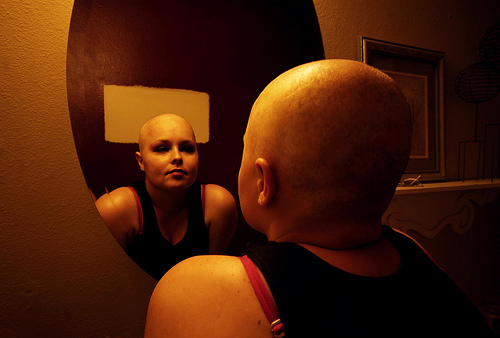
Women Can Get "Male Pattern Baldness" Too
The same genes and hormones that fuel hair loss in men also fuel hair loss in women, but in a different pattern. In men, the hair at first starts coming in shorter, thinner, and in a lighter shade. Gradually, hair follicles start producing just velous hair, also known as peach fuzz, generally from the front hairline back, or from the back of the head forward. In women, the pattern of hair loss is more diffuse, all over the scalp, but leaving the front hairline intact. Men tend to get completely bald, but women usually develop thinning hair rather than complete hair loss.
- Important notification about information and brand names used in this slideshow!
- Photo courtesy of jessyparr by Flickr : www.flickr.com/photos/jessyparr/2307376706/
- www.webmd.com/skin-problems-and-treatments/hair-loss/ss/slideshow-womens-hair-loss
- http://www.theguardian.com/lifeandstyle/2012/feb/06/female-hair-loss-causes-treatment
- http://www.medicalnewstoday.com/releases/70955.php
- http://www.webmd.com/skin-problems-and-treatments/hair-loss/features/women-hair-loss-causes

Hair And Self-Image Are Tangled Together
For some women, every day is a bad hair day. Women who lose their hair often start to wonder who that person is staring back at them from the mirror. The first sign of baldness is women is usually a widening part in the hair. At that point, most women start to experiment with different hair styles, and they are never sure they have the right look. Then women find they can cover up their hair loss if they dry their hair a certain way, or they color their hair a certain way, or they comb their hair a certain way. It's a time-consuming process that most women want to talk about, but find too embarrassing.
- Important notification about information and brand names used in this slideshow!
- Photo courtesy of Helga Weber by Flickr : www.flickr.com/photos/helga/4647701674/
- Mapes, D. Suffering in silence: the fallout of hair loss. NBC News. http://www.nbcnews.com/id/26895411/ns/health-skin_and_beauty/t/fallout-hair-loss-suffering-silence/#.UkMU5dJJP84. 29 September 2008. Accessed 26 September 2013.
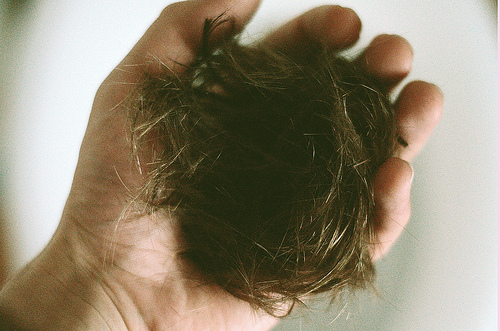
How Much Hair Loss Is Normal?
An average scalp has 100,000 hairs. Each active follicle produces a single hair that grows at a rate of about an inch (25 mm) a month. After two to six years, the hair stops growing, and after a few months, it falls out. It's normal for women to lose 50 to 100 strands of hair per day. Baldness occurs when the hair doesn't grow back. In women, if there are areas of complete hair loss, they typically occur at the center of the scalp, at the crown of the head., spreading out in all directions. It's more common, however, for hair to be thin rather than completely absent. The Savin scale measures the extent of hair loss in women and men.
- Important notification about information and brand names used in this slideshow!
- Photo courtesy of Niklas Thran by Flickr : www.flickr.com/photos/nklsthrn/9902580553/
- You may want to see WebMD, Women's Hair Loss Slide Show, http://www.webmd.com/skin-problems-and-treatments/hair-loss/ss/slideshow-womens-hair-loss. Accessed 26 September 2013.
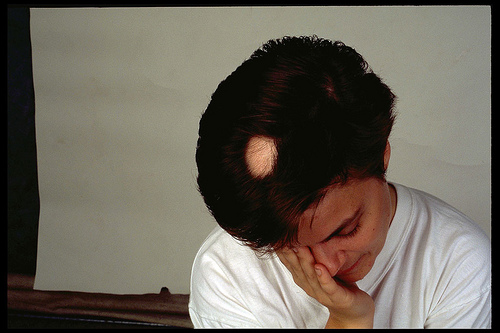
What Causes Hair Loss In Women?
The most common cause of hair loss in women is androgenetic alopecia, more commonly known as "male pattern" hair loss. As in men, this form of women's hair loss is fueled by testerone, which a woman's body may produce in excess in polycystic ovarian syndrome (PCOS). A condition known as traction alopecia can occur when braiding or pony tails pull at the roots of hair. Women may lose hair when they change birth control pills, after severe trauma (either physical or psychological), when they stop hormone replacement therapy, when they deliver a baby (the loss of the placenta temporarily changes hormone levels), with either underactive or overactive thyroid, or when they have diabetes, high blood pressure, or cancer.
- Important notification about information and brand names used in this slideshow!
- Photo courtesy of Carolyn Speranza by Flickr : www.flickr.com/photos/urbanaquariumvideo/3331916576/
- Reichman, J. Getting to the root of female hair loss. NBC Today. http://www.today.com/id/14342447/ns/today-today_health/t/getting-root-female-hair-loss/#.UkMYjNJJP84. Accessed 23 September 2013.

Thyroid Problems May Trigger Hair Loss
About one woman in a hundred develops a condition called Grave's disease, or hyperthyroidism, between the ages of 20 and 40. About one woman in twenty-five develops a condition of low thyroid function called hypothyroidism (sometimes as a result of treatment for Grave's disease) by the age of 50. Both kinds of thyroid problems can cause hair loss. Fortunately, both conditions are treatable, although many doctors either use drastic treatments for hyperthyroidism or wait too long to treat hypothyroidism. When thyroid problems are the cause of hair loss, there are always other symptoms. Hyperthyroidism and Grave's disease typically cause anxiety, weight loss, hot flashes even before menopause, and palpitations. Hypothyroidism typically causes sluggishness, weight gain, coldness, and weight gain.
- Important notification about information and brand names used in this slideshow!
- Photo courtesy of Francesco Mosca by Flickr : www.flickr.com/photos/francesco/414616069/
- [Guideline] Bahn Chair RS, Burch HB, Cooper DS, et al. Hyperthyroidism and other causes of thyrotoxicosis: management guidelines of the American Thyroid Association and American Association of Clinical Endocrinologists. Thyroid. Jun 2011.21(6):593-646.

Hair Loss And Birth Control Pills
Some women lose hair when they stop taking or change brands of birth control pills. Most oral contraceptives contain a mixture of two hormones, estrogen and progesterone, but different brands contain different amounts of the hormones, usually so the product can also regulate menstruation. When women switch from a high-estrogen version of the Pill to a brand that contains less estrogen or none at all, hair loss can follow. It's important to discuss this possibility with the doctor before getting a prescription for a different brand of the Pill. Choice of contraception is something women have to discuss with their doctors, but the brands least likely to trigger loss of hair are desogestrel (Mircette), ethynodiol diacetate (Demulen, Zovia), norethindrone (Ovcon 35), and noregestimate (Ortho-Cyclen, Orth Tri-Cyclen).
- Important notification about information and brand names used in this slideshow!
- Photo courtesy of Nate Grigg by Flickr : www.flickr.com/photos/nateone/2713580189/
- WebMD, Hair Loss and Oral Contraceptives. http://www.webmd.com/skin-problems-and-treatments/hair-loss/hair-loss-oral-contraceptives. Accessed 26 September 2013.
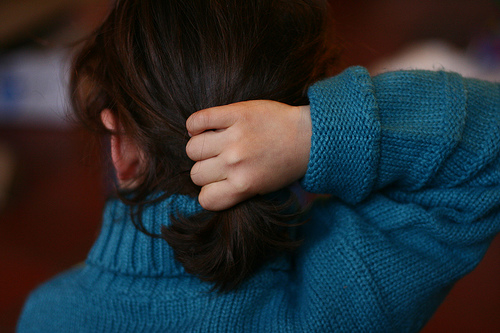
Women With PCOS Tend To Have More Hair Problems
Women who have polycystic ovarian syndrome, also known as PCOS, are especially prone to hair loss. The ovaries normally produce small amounts of "male" hormones such as testosterone, androstenedione, and dehydroepiandrosterone sulfate (DHEA). In PCOS, the ovaries are flooded with sugar from the bloodstream and, because they can't "resist" the effects of insulin, produce large amounts of both estrogen and male hormones. The male hormones accelerate hair loss in a male pattern. The first-line treatments that lower blood sugar levels, such as the diabetes drug metformin, can help stop hair loss, as can dieting (losing just 2 or 3 pounds can make a difference), but other hormone-related therapies may be necessary to get hair back.
- Important notification about information and brand names used in this slideshow!
- Photo courtesy of olivier hodac by Flickr : www.flickr.com/photos/hodac/337522608/
- Cumming DC, Yang JC, Rebar RW, Yen SS. Treatment of hirsutism with spironolactone. JAMA. Mar 5 1982. 247(9):1295-8.

Crash Diets: You May Lose More Than Weight
When you lose weight too fast on a crash diet, you may lose hair, too. Generally the problem is a deficiency of vitamin A--and that's not hard to correct. Just make sure you eat a few carrots, a little crookneck squash, or sweet potatoes with at least a teaspoon (5 grams) of oil. Your body can convert the beta-carotene in these vegetables into the vitamin A required for healthy skin, nails, and hair. The oil is necessary to help the small intestine absorb the beta-carotene. Women of reproductive age generally should not take vitamin A supplements, because overdoses can cause birth defects if taken during the first trimester of pregnancy. (It takes a lot of vitamin A, however, actually to cause an overdose). It is also important to get enough protein, but that can be done with as little as 3-1/2 oz (100 grams) of protein food every day.
- Important notification about information and brand names used in this slideshow!
- Photo courtesy of Gideon by Flickr : www.flickr.com/photos/malias/41415099/
- Goette DK, Odom RB. Alopecia in crash dieters. JAMA. 1976 Jun 14. 235(24):2622-3.

Avoid Tight Hairstyles
Central centrifugal cicatricial alopecia (CCCA) is a term dermatologists use to describe a number of conditions that result in the hair falling out after inappropriate hair styling. It can occur when the hair is braided too tighly, after the application of hot combs that destroy hair follicles, or after the application of so much tension on the scalp that it grows too tough and thick to support the growth of hair. The condition can result in either slow or rapid hair loss, sometimes in just a week or two. The doctor may be able to stimulate hair regrowth with steroids and antibiotics, applied directly to the scalp, but the most important thing is to stop damaging the follicles.
- Important notification about information and brand names used in this slideshow!
- Photo courtesy of donnikowski by Flickr : www.flickr.com/photos/tonicarbona/302816409/
- Zinkernagel MS, Trüeb RM. Fibrosing alopecia in a pattern distribution: patterned lichen planopilaris or androgenetic alopecia with a lichenoid tissue reaction pattern?. Arch Dermatol. Feb 2000. 136(2):205-11.

Treatments For Hair Loss In Women
Usually the most important factor in treating hair loss in women is stopping the problem that is causing the hair loss in the first place. If the wrong kind of birth control pill has caused hair loss, then it is important to switch to a different brand. If applying hot combs or braiding the hair too tightly is causing hair loss, then is important to use different kinds of hair styling. When there is no other way to bring hair back, the alternatives are wigs, which can look surprisingly natural, or hair transplants. Hair transplantation techniques developed to move just one hair at a time are often suitable for women. Transplanted hair won't fall out like the hair it replaces.
- Important notification about information and brand names used in this slideshow!
- Photo courtesy of Pierce Mattie Communications by Flickr : www.flickr.com/photos/publicrelations/8772873782/
- Rassman WR, Bernstein RM, McClellan R, Jones R, Worton E, Uyttendaele H. Follicular unit extraction: minimally invasive surgery for hair transplantation. Dermatol Surg. Aug 2002.28(8):720-8.




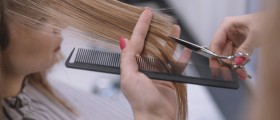




















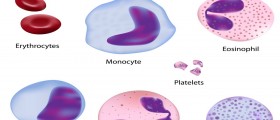
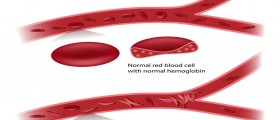
Your thoughts on this
Loading...